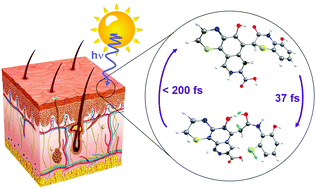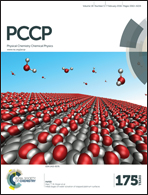Theoretical insights into the photo-protective mechanisms of natural biological sunscreens: building blocks of eumelanin and pheomelanin†
Abstract
Eumelanin (EM) and pheomelanin (PM) are ubiquitous in mammalian skin and hair – protecting against harmful radiation from the sun. Their primary roles are to absorb solar radiation and efficiently dissipate the excess excited state energy in the form of heat without detriment to the polymeric structure. EU and PM exist as polymeric chains consisting of exotic arrangements of functionalised heteroaromatic molecules. Here we have used state-of-the-art electronic structure calculations and on-the-fly surface hopping molecular dynamics simulations to study the intrinsic deactivation paths of various building blocks of EU and PM. Ultrafast excited state decay, via electron-driven proton transfer (in EU and PM) and proton-transfer coupled ring-opening (in PM) reactions, have been identified to proceed along hitherto unknown charge-separated states in EU and PM oligomers. These results shed light on the possible relaxation pathways that dominate the photochemistry of natural skin melanins. Extrapolation of such findings could provide a gateway into engineering more effective molecular constituents in commercial sunscreens – with reduced phototoxicity.


 Please wait while we load your content...
Please wait while we load your content...